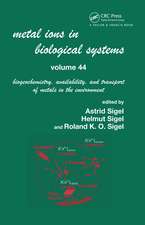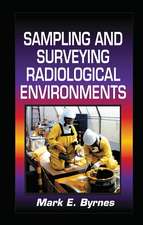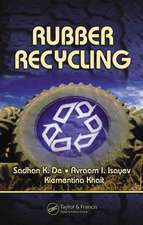Biophilic Urbanism: Designing Resilient Communities for the Future
Autor Phillip James Tabben Limba Engleză Paperback – 21 dec 2020
Because of the dire necessity to respond to the COVID-19 pandemic, Biophilic Urbanism includes discussion of our need for connections, both to nature and one another, and the physical characteristics of cities and buildings relative to the contagious qualities of the air-borne virus.
Case studies, found throughout the world, are presented illustrating detailed biophilic planning and design strategies. The book will be of use to practitioners and students in the fields of natural and social sciences, behavioral science and psychology, environmental engineering, health and wellness professionals, architecture, landscape architecture, interior architecture, and planning.
| Toate formatele și edițiile | Preț | Express |
|---|---|---|
| Paperback (1) | 333.59 lei 43-57 zile | |
| Taylor & Francis – 21 dec 2020 | 333.59 lei 43-57 zile | |
| Hardback (1) | 769.37 lei 43-57 zile | |
| Taylor & Francis – 21 dec 2020 | 769.37 lei 43-57 zile |
Preț: 333.59 lei
Nou
Puncte Express: 500
Preț estimativ în valută:
63.83€ • 66.82$ • 52.82£
63.83€ • 66.82$ • 52.82£
Carte tipărită la comandă
Livrare economică 07-21 aprilie
Preluare comenzi: 021 569.72.76
Specificații
ISBN-13: 9780367473266
ISBN-10: 0367473267
Pagini: 272
Ilustrații: 7 Tables, color; 5 Line drawings, color; 157 Halftones, color; 162 Illustrations, color
Dimensiuni: 174 x 246 x 22 mm
Greutate: 0.54 kg
Ediția:1
Editura: Taylor & Francis
Colecția Routledge
Locul publicării:Oxford, United Kingdom
ISBN-10: 0367473267
Pagini: 272
Ilustrații: 7 Tables, color; 5 Line drawings, color; 157 Halftones, color; 162 Illustrations, color
Dimensiuni: 174 x 246 x 22 mm
Greutate: 0.54 kg
Ediția:1
Editura: Taylor & Francis
Colecția Routledge
Locul publicării:Oxford, United Kingdom
Public țintă
General, Postgraduate, Professional, Professional Practice & Development, and Undergraduate AdvancedCuprins
PART ONE: Principles
Chapter 1. Introduction
Chapter 2. Principles
PART TWO: Precedents
Chapter 3. Precedent 1: Castello di Gargonza, Italy
Chapter 4. Precedent 2: Google Headquarters, California
Chapter 5. Precedent 3: Helsinge Haveby, Denmark
Chapter 6. Precedent 4: Kronsberg District, Germany
Chapter 7. Precedent 5: Pontevedra City Center, Spain
Chapter 8. Precedent 6: Singapore Park Connector Network
PART THREE: Case Study
Chapter 9. Serenbe Community, Georgia
Chapter 10. Summary
Chapter 1. Introduction
Chapter 2. Principles
PART TWO: Precedents
Chapter 3. Precedent 1: Castello di Gargonza, Italy
Chapter 4. Precedent 2: Google Headquarters, California
Chapter 5. Precedent 3: Helsinge Haveby, Denmark
Chapter 6. Precedent 4: Kronsberg District, Germany
Chapter 7. Precedent 5: Pontevedra City Center, Spain
Chapter 8. Precedent 6: Singapore Park Connector Network
PART THREE: Case Study
Chapter 9. Serenbe Community, Georgia
Chapter 10. Summary
Notă biografică
Phillip James Tabb is Professor Emeritus of Architecture at Texas A&M University and founder and principal of Phill Tabb Studio. He received his Bachelor of Science degree in Architecture from the University of Cincinnati, Master of Architecture from the University of Colorado, and his PhD in the Energy and Environment Programme from the Architectural Association in London. Among his publications is Solar Energy Planning published by McGraw-Hill in 1984, co-authored The Greening of Architecture: A Critical History and Survey of Contemporary Sustainable Architecture and Urban Design published by Ashgate in 2013, co-edited Architecture, Culture and Spirituality also published by Routledge in 2015, Serene Urbanism: A Biophilic Theory and Practice of Sustainable Placemaking, published by Routledge in 2017, and Elemental Architecture: The Temperaments of Sustainability, published by Routledge in 2019. He is the master plan architect for the Serenbe Community – an award-winning biophilic community being realized near Atlanta, Georgia.
Recenzii
In his new book, Biophilic Urbanism, Phillip Tabb provides a view of how cities can be places of companionship, emotional renewal, and flourishing through the thoughtful integration of nature and natural systems in the built environment. A central theme throughout the book is a recognition that people are not "masters of the universe" but rather "humble citizens of a planet that includes other living entities together in ecological systems."
While many others have made similar claims, Professor Tabb addresses how to turn these thoughts into practice. He focuses on examples of small-scale urban environments and addresses how biophilic design – from backyard gardens to woodland pathways and shared green spaces – can contribute to social, emotional, and physical well-being of the inhabitants as well as the place we all call home – planet Earth.
—Judith Heewagen, PhD, Affiliate Faculty, University of Washington, Department of Architecture
Experiences of nature improve our health and wellbeing. Yet, on average Americans spend more than 90% of our lives indoors, then when come outside many times we are in communities that offer little of the living world. In Biophilic Urbanism, architect and community planner Phillip Tabb, shows how to make vibrant experiences of nature in our urban fabric.
Tabb explores the theory and history of biophilia as a scientific endeavor and how it connects to design. He then lays out a biophilic pattern language, a set of design elements, to help make urban experiences of nature effective. Through case studies the lessons from a number of communities where experiencing nature is part of daily life. Tabb is the master planner of Serenbe, a new community outside of Atlanta that intentionally focuses on bringing nature into the lives of the inhabitants.
—William Browning, Managing Partner, Terrapin Bright Green
This important book gathers up and clearly presents, in design relevant form, the essential understandings, research findings and arguments for the integration of nature into the design of the human environment, from the scale of the individual building to the street, block, neighborhood, community and bioregion. Professor Tabb illustrates how the basic principles and patterns of biophilic design are present in a diverse range of precedents, and in one detailed case study of the new community of Serenbe, located in the Chattahoochee Hills of Georgia, for which Tabb was the Master Planner and in which he now lives in a biophilic dwelling and garden that he designed for himself. The book is timely because biophilic design is increasingly recognized as an essential response to the cascading crises of climate destabilization, species extinction, and global ecosystem collapse. Of particular relevance to readers today is the author’s consideration of how biophilic urbanism can exert a restorative and healing effect on everyday human life in the emerging age of global pandemics. Biophilic Urbanism is a book that not only should be of interest to design and planning students and professionals, but also anyone who is committed to creating a more sustainable, beautiful and life-enhancing home for human dwelling that is in harmony with the natural world.
—Gary J. Coates, ACSA Distinguished Professor, Kansas State University, (editor) Resettling America: Energy, Ecology and Community, and author of Erik Asmussen, architect and The Architecture of Carl Nyrén.
There is no better time than now to reconsider how we design and build the environment in which we reside as a humanity and Dr. Tabb’s Biophilic Urbanism is a practical guide to this transformational process. Due to the COVID pandemic the world is rethinking how to stay healthy in cities, hospitals, nursing homes, schools and other institutions. Dr. Tabb explains the science supporting our need to connect with nature for both human and environmental wellbeing, outlines the various scales of interventions, and lists key precedents with their positive outcomes. Design and engineering students, practitioners, owners and project team members will find the book clear and informative and the precedent tables a helpful metric to use for understanding the effectiveness of biophilic pattern attributes on projects. Biophilic Urbanism in debuting at a time when the world is reconsidering what constitutes progress and how best to move forward to promote human and environmental health. Now indeed is the time to open the doors and windows, let in the sunshine in and the fresh air flow through, infuse buildings with their landscapes, weave nature throughout our cities and shade them with trees, listen to the birds sing and embrace the local culture and ecology of place.
—Elizabeth Freeman Calabrese, AIA, NCARB, LEED AP, WELL AP, WELL Faculty
While many others have made similar claims, Professor Tabb addresses how to turn these thoughts into practice. He focuses on examples of small-scale urban environments and addresses how biophilic design – from backyard gardens to woodland pathways and shared green spaces – can contribute to social, emotional, and physical well-being of the inhabitants as well as the place we all call home – planet Earth.
—Judith Heewagen, PhD, Affiliate Faculty, University of Washington, Department of Architecture
Experiences of nature improve our health and wellbeing. Yet, on average Americans spend more than 90% of our lives indoors, then when come outside many times we are in communities that offer little of the living world. In Biophilic Urbanism, architect and community planner Phillip Tabb, shows how to make vibrant experiences of nature in our urban fabric.
Tabb explores the theory and history of biophilia as a scientific endeavor and how it connects to design. He then lays out a biophilic pattern language, a set of design elements, to help make urban experiences of nature effective. Through case studies the lessons from a number of communities where experiencing nature is part of daily life. Tabb is the master planner of Serenbe, a new community outside of Atlanta that intentionally focuses on bringing nature into the lives of the inhabitants.
—William Browning, Managing Partner, Terrapin Bright Green
This important book gathers up and clearly presents, in design relevant form, the essential understandings, research findings and arguments for the integration of nature into the design of the human environment, from the scale of the individual building to the street, block, neighborhood, community and bioregion. Professor Tabb illustrates how the basic principles and patterns of biophilic design are present in a diverse range of precedents, and in one detailed case study of the new community of Serenbe, located in the Chattahoochee Hills of Georgia, for which Tabb was the Master Planner and in which he now lives in a biophilic dwelling and garden that he designed for himself. The book is timely because biophilic design is increasingly recognized as an essential response to the cascading crises of climate destabilization, species extinction, and global ecosystem collapse. Of particular relevance to readers today is the author’s consideration of how biophilic urbanism can exert a restorative and healing effect on everyday human life in the emerging age of global pandemics. Biophilic Urbanism is a book that not only should be of interest to design and planning students and professionals, but also anyone who is committed to creating a more sustainable, beautiful and life-enhancing home for human dwelling that is in harmony with the natural world.
—Gary J. Coates, ACSA Distinguished Professor, Kansas State University, (editor) Resettling America: Energy, Ecology and Community, and author of Erik Asmussen, architect and The Architecture of Carl Nyrén.
There is no better time than now to reconsider how we design and build the environment in which we reside as a humanity and Dr. Tabb’s Biophilic Urbanism is a practical guide to this transformational process. Due to the COVID pandemic the world is rethinking how to stay healthy in cities, hospitals, nursing homes, schools and other institutions. Dr. Tabb explains the science supporting our need to connect with nature for both human and environmental wellbeing, outlines the various scales of interventions, and lists key precedents with their positive outcomes. Design and engineering students, practitioners, owners and project team members will find the book clear and informative and the precedent tables a helpful metric to use for understanding the effectiveness of biophilic pattern attributes on projects. Biophilic Urbanism in debuting at a time when the world is reconsidering what constitutes progress and how best to move forward to promote human and environmental health. Now indeed is the time to open the doors and windows, let in the sunshine in and the fresh air flow through, infuse buildings with their landscapes, weave nature throughout our cities and shade them with trees, listen to the birds sing and embrace the local culture and ecology of place.
—Elizabeth Freeman Calabrese, AIA, NCARB, LEED AP, WELL AP, WELL Faculty
Descriere
Biophilic Urbanism provides readers with the tools to create more nature-based urban environments that are climate positive, sustainable, and healthy.






















